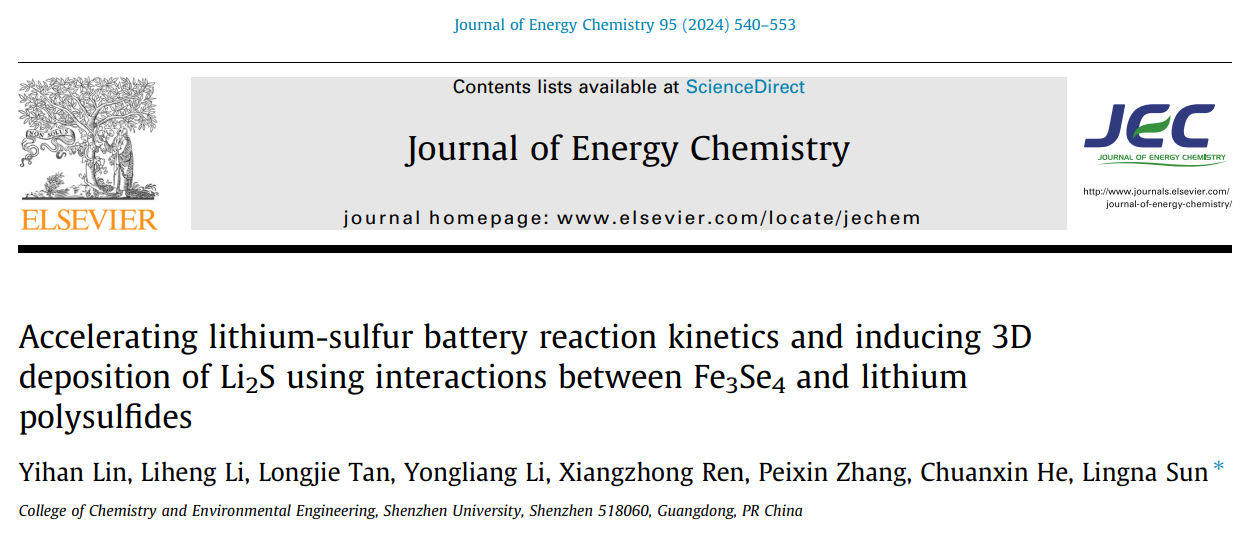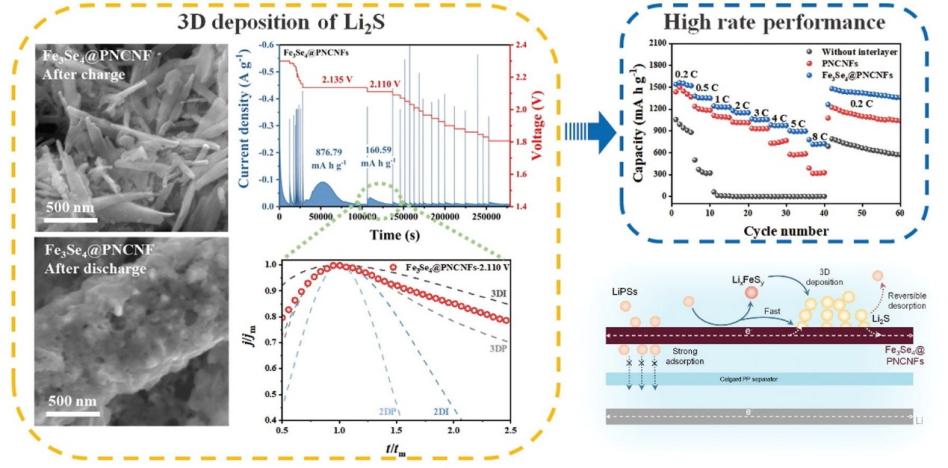Recently, Professor Lingna Sun’s team from the College of Chemistry and Environmental Engineering of Shenzhen University published the latest research progresses about Lithium-sulfur batteries in Journal of Energy Chemistry.


With the rapid development of the social economy and electrification, the demand for energy continues to increase. Lithium-ion batteries, commonly used in daily life, can no longer satisfy the burgeoning energy requirements. Lithium-sulfur batteries (LSBs) have attracted extensive research due to their theoretical energy density of 2567 Wh kg-1. Furthermore, their low cost and environmentally friendly characteristics indicate significant commercialization potential. However, their practical application is hindered by poor conductivity of the sulfur cathode, the shuttle effect, and the irreversible deposition of Li2S.
To tackle these challenges, researchers have explored various modificatory methods, including electrolyte modification, cathode modification, separator modification, and the insertion of functional interlayers. These modification strategies can usually take advantage of the strong adsorption and fast catalytic conversion of materials to lithium polysulfides (LiPSs) to mitigate the shuttle effect. However, LSBs encompass intricate electrochemical reaction mechanisms, and certain materials tend to exhibit unique interactions with LiPSs. Investigating these interaction mechanisms is beneficial to the design of improvement strategies for LSBs.
In this study, we designed a composite of porous nitrogen-doped carbon nanofibers loaded with Fe3Se4 (Fe3Se4@PNCNFs) using electrospinning technique and heat treatment. This composite was employed as an interlayer in LSBs to enhance their electrochemical properties. The results indicate that Fe3Se4@PNCNFs exhibit strong adsorption and catalytic effects on LiPS intermediates generated during the charging and discharging of LSBs, thus retaining the LiPSs on the cathode side and mitigating the shuttle effect. Furthermore, the high electrical conductivity reduces interfacial impedance, accelerating the mobility of lithium ions. The interaction mechanism between LiPSs and interlayer materials was also investigated, and the results showed that Fe3Se4 could react with LiPSs, resulting in the formation of a novel polysulfide intermediate known as LixFeSy. This intermediate promotes the 3D deposition of Li2S, thereby enhancing its reversibility and rate performance, thereby offering a novel approach for improving LSB performance. After assembling Fe3Se4@PNCNFs as an interlayer in LSBs, they not only exhibited favorable capacity retention at low currents densities, but also remarkably maintained ultra-high specific capacity at high currents densities under the influence of polysulfide intermediates.
The research article “Accelerating lithium-sulfur battery reaction kinetics and inducing 3D deposition of Li2S using interactions between Fe3Se4 and lithium polysulfides” was published in Journal of Energy Chemistry (IF: 13.1, JCR Chemistry Region 1, TOP Journal). Postgraduate student Yihan Lin is the first author of this paper, and Professor Lingna Sun is the corresponding author. College of Chemistry and Environmental Engineering of Shenzhen University is the corresponding unit.
This work was financially supported by the National Natural Science Foundation of China, Guangdong Basic and Applied Basic Research Foundation, China , and the Shenzhen Science and Technology Foundation, China .
See full text link: https://doi.org/10.1016/j.jechem.2024.03.052
